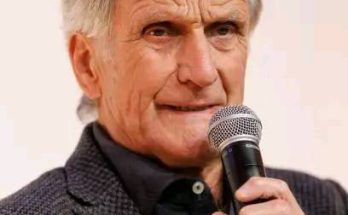.In a development that has sent ripples through the hockey world, the New York Rangers have officially confirmed that Matt Rempe, the towering 6‑foot‑9 rising forward, has secured a two‑year contract extension. This dramatic turn—not merely financial but emblematic of a strategic shift—marks Rempe’s long-term cementing in the Rangers organization and signals a bold investment in physicality, grit, and raw potential. The shock lies not just in the length or timing of the deal, but what it says about the evolving identity of the Rangers and their confidence in Rempe as a foundational piece of their future forward group.
The contract, finalized on June 18, carries a total value of $1.95 million over two years, with an average annual value (AAV) of $975,000 (re. That price tag, relatively modest in dollar terms, is massive in implication. By locking him up before the July 1 free agency window—and potential offer‑sheet eligibility—the Rangers effectively removed indecision from Rempe’s offseason and preempted interest from wealthier contenders. With cap space still hovering around $14.5 million before re-signing several restricted free agents, New York showed discipline and intentionality in choosing Rempe as a near‑certitude in their plans .
From the moment he stepped into the NHL spotlight during the 2023‑24 Stadium Series debut—where he debuted by dropping the gloves just seconds into his first shift—Rempe captured attention . Debuting in an outdoor, nationally televised game, he set the tone: raw physicality, body presence, willingness to battle, and a player unapologetically willing to embrace the role of enforcer. The Rangers, seeing something beyond those fights, added him to their playoff roster where he continued to carve out a role—not just as a fighter but also chipping in a goal (. His size, reach, and toughness made him a cult favorite among fans—dubbed “Rempe‑mania”—and his fight‑for‑you energy became a hallmark of his persona on Broadway.
Yet Rempe’s journey to this point has been anything but linear. The start of the 2024‑25 season was rocky. After clearing waivers and being demoted to the Hartford Wolf Pack, Rempe saw himself returning to the AHL for a developmental reset (. But he responded with maturity. In Hartford, he found consistency and sizable ice time—an outlet to sharpen his game beyond raw physical tools . The cloistering away wasn’t punishment so much as a strategic recalibration: give Rempe the space and structure to improve skating, situational awareness, and discipline—without the NHL spotlight pressing on him. Fans were mixed. Some accused him of wasted potential, others pleaded for prolonged seasoning before his next NHL opportunity . But Rangers brass saw a player coming into his own, now with a more rounded game.
When recalled mid‑season after Kaapo Kakko’s trade , Rempe returned to a team in flux. His presence added a sharpened edge to the bottom six and allowed lines to balance size and toughness. His statistical impact—eight points (three goals, five assists) and a plus‑7 rating in 42 games, plus a team‑leading 19.64 hits per 60 minutes—signaled progress . But there were alarming signs, too. A December 20 hit from behind on Miro Heiskanen resulted in a match penalty and a league suspension of eight games (. It revealed Rempe’s ongoing challenge: calibrating his aggression within the contours of the modern NHL.
The Rangers’ new coaching regime, headed by Mike Sullivan, presents both challenge and sanctuary. Sullivan—no stranger to physical, defensively responsible hockey from his time in Pittsburgh—now works to integrate Rempe into a disciplined, structure-first system. The organization is also lobbying the NHL for more consistent officiating around big players, conscious of how Rempe’s size can work against him in whistle calls .
The timing of this contract is pivotal. With injuries and roster churn after trading Chris Kreider, the Rangers needed clarity in their forward corps . Rempe’s re-signing gives the team a physical fulcrum: someone to recenter heavy, fourth‑line combinations with Adam Edstrom and Sam Carrick, giving coach Sullivan a piece who can tilt physical matchups while still contributing on the shots and hits board.
In the larger strategic picture, the Rangers’ investment in Rempe telegraphs a cultural shift. New York has been leaning ever harder into the merging of skill and substance. Guys like Artemi Panarin and Mika Zibanejad bring finesse; Rempe brings size. That duo of skill and physicality, balanced across the roster, was part of the blueprint for a modern contender. And if there’s something Sullivan admires, it’s that unique mix. The official statement said as much: “We think he’s improving a lot… and that he took big strides from last year” .
What makes this signing truly shocking isn’t the length or money—it’s what it reveals about how the Rangers envision their identity moving forward. They’re declaring a commitment to physical edge that doesn’t sacrifice pace or puck skill. They’re banking on Rempe’s still‑nascent evolution from brawler to role player. And they’re signaling to the rest of the league: they won’t just outskill you—they’ll outwork and outmuscle you, too.
Rempe’s story remains unfinished. At 22, he still has room to grow. This contract stakes not just a claim on him financially, but on his developmental arc. The next two years become a test: balancing his physical instincts with discipline, expanding offensive output, and integrating fully into Sullivan’s system. If he succeeds, he could become the archetypal modern energy forward—big, physical, but also trustworthy in all zones. If he doesn’t, the deal looks like a gamble, too long, too early.
Inside the locker room and on the ice, Rempe’s aura is growing. He’s become a symbol—of chippiness, of raw force, of blue-collar heart. The Garden crowds loved his presence; simply chanting his name, cheering his hits, waiting for the next gear. And in payback, he responded—not with ego, but with effort. The physical transformation was apparent: Rempe entered the summer training to become stronger, more agile, more refined after a family vacation and offseason honing . His work ethic echoes the Rangers’ broader ethos: talent brought to heel by intensity.
It’s worth noting this is not a blockbuster headline by salary, but it’s a blockbuster declaration. And it comes at a time of flux in New York. Their captaincy is vacant, core pieces are reshuffled, expectations are recalibrated after missing the playoffs . In such a reset, a contract like this is a keystone. It could redefine the Rangers style, culture, and chemistry.
For Rempe personally, this is validation. A step from fringe fourth‑liner to secure NHL fixture. His tough times—suspensions, AHL reassignment, in‑game ejections—could have derailed him. Instead, they’re framed as learning curves, evidence of maturation. The contract says: we believe in your growth. And that confirmation—especially in an age where enforcer‑types are rare—is a jolt of confidence about Rempe’s trajectory.
Could it backfire? Hockey’s a cruel sport. Overreach, injury, or stagnation could derail. But the Rangers are betting on upside: that Rempe’s frame is not just physical but also fast‑learning; that his heart is big enough to handle adversity; that his hunger is as massive as his frame. And for that, Sullivan might just popup a player who shifts games, whose fight is matched by skill, who wears the number 73 differently than any Ranger before him.
In the end, it might be a subtle signing—but one with tectonic ambition. By re‑signing Matt Rempe, the Rangers aren’t just securing an edge; they’re crafting identity. They’re saying they’re all‑in on physicality without sacrificing structure, all‑in on developing young, unconventional talent, and all‑in on balancing the tightrope between grit and game.
This extension isn’t just about money or roster space. It’s a statement: “We back Rempe.” The shock doesn’t come from the dollars—it comes from the message. The Rangers are leaning into a new version of themselves—grittier, tougher, hungrier—and they believe Matt Rempe is a pillar of that new vision. And so, we watch, we wait, and we anticipate: can this shock evolve into substance? The next two seasons may prove whether Matt Rempe becomes the embodiment of that bold new direction—or just an experiment in what might have been.



